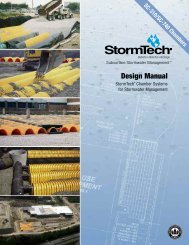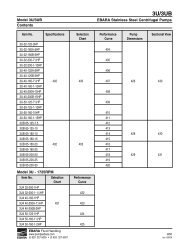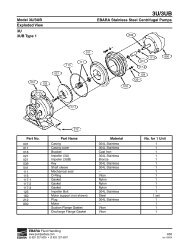Rodney Hunt - International Wastewater Technologies
Rodney Hunt - International Wastewater Technologies
Rodney Hunt - International Wastewater Technologies
You also want an ePaper? Increase the reach of your titles
YUMPU automatically turns print PDFs into web optimized ePapers that Google loves.
11.Why is the Rotovalve ideal<br />
for most “smaller than line size”<br />
applications?<br />
The primary reason is that the Rotovalve is a<br />
full port valve, and when fully open provides full<br />
flow-through characteristics. When a Rotovalve is<br />
installed in a Venturi type arrangement ("smaller<br />
than line size"), head loss can be kept to a<br />
minimum.<br />
Another reason is that when a smaller valve is<br />
installed in a pipeline, higher velocities will result,<br />
allowing more precise flow control. In this<br />
situation, the Rotovalve has distinct performance<br />
advantages over other quarter-turn valves:<br />
The valve is fully skirted, eliminating sediment<br />
entrapment and ensuring that all flow passes<br />
through the port. Full skirting also reduces the<br />
potential for cavitation that can occur with<br />
other valves.<br />
Venturi Section Venturi Section<br />
Rotovalve<br />
Direction of flow<br />
The metal seating of the Rotovalve withstands<br />
high velocities, which may cause failure of<br />
resilient seats.<br />
There are two points of pressure reduction in<br />
the valve the inlet and the outlet orifices. This<br />
reduces the potential for vibration and<br />
cavitation and results in more precise control.<br />
“Smaller than line size" installations provide<br />
cost savings to the user in permitting the use of a<br />
smaller (and less expensive) valve, as well as the<br />
potential for downsizing the entire facility.<br />
Figure 4





